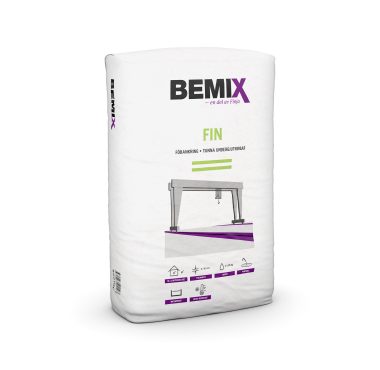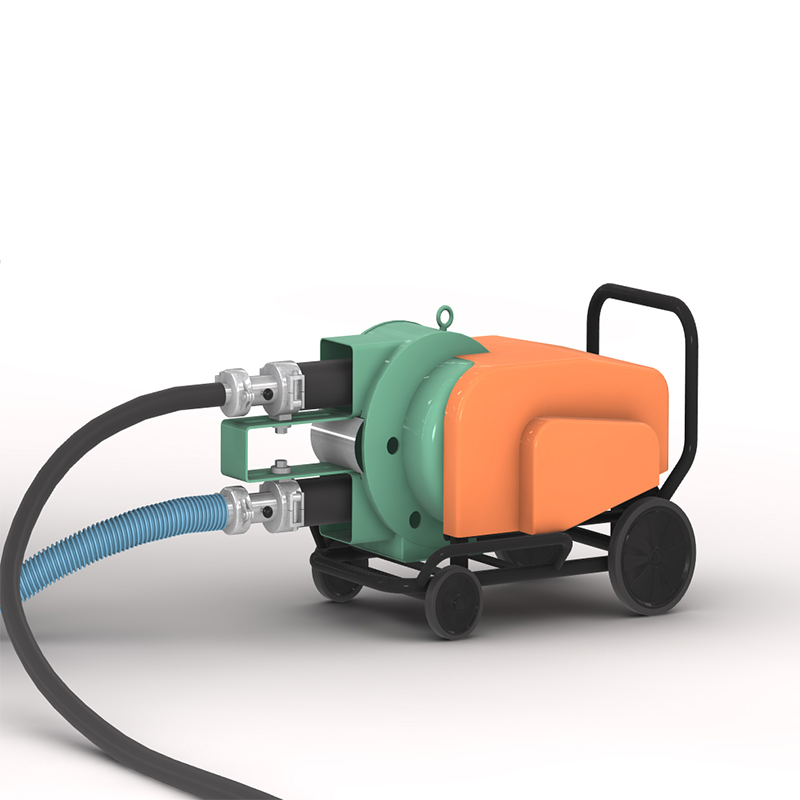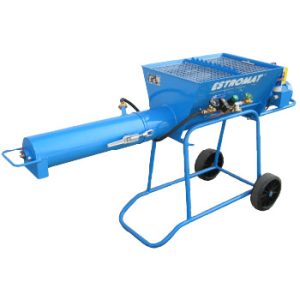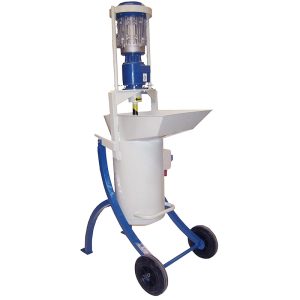Bemix Fin
Information
Bemix Fin is an expanding underpouring grout for when a finer ballast is needed. Running consistency, good pumpability. Use for machine underpouring and anchorage. Pumpable, expanding cement that is used for underpouring and embedding. Anchorage of bolts and reinforcement. Use for railing posts, machine underpouring, bolt anchorage or anchoring reinforcement where a thinner layer is desired. Approved for concrete repairs according to EN 1504-6.
Product data
|
Article Number: |
1100030 |
|
Weight |
25 kg á 40 bags/ palette |
|
Product category |
Expanding mortar |
|
Function |
Anchoring, Pumpable |
|
Processable minutes |
20 |
|
Compression strength |
70 |
|
Layer thickness in mm |
5-40 |
|
Consumption kg/m2/mm |
2 |
|
Water quantity litres/25 kg |
4,0 |
|
1 kg dry mortar = finished concrete in litres |
0,5 |
|
Waterproof |
Yes |
Instructions
Casting
Preparation:
The concrete substrate must be clean and free of dust, damaged concrete, grease or other contaminants that may impair adhesion. Substrate with a roughened and raw surface with closely spaced irregularities provide better adhesion. Clean the substrate carefully and if possible pre-water 24 hours before casting. Remove surface water immediately before casting.
Mixing:
Do not mix by hand. The best mixer is a rapid mixer type Rojo 50, automatic mixer or flat mixer. For smaller quantities, mixing with a drill and mixer attachment works well. Mix to an even and clump-free consistency. Always pour in the water first. Use a graduated mixing vessel and ensure that the temperature of the mix is 20°C. The grout must be used within 20 minutes.
Casting:
The mix must be poured into the formwork continuously and as quickly as possible. There must be no interruptions until casting is finished. The grout should only be poured into the formwork from one side so as to avoid air pockets. Ensure that the formwork does not leak. Where large areas are to be underpoured, the grout should be pumped on site for the best result.
Reinforcement:
To avoid cracks etc. due to drying out, reinforcing steel is laid in the grout in cases such as: with thick underpinnings, when the underpinning is long such as with rail underpinning, when the underpinning goes outside the slab, with in-situ casting or where there is a risk of rapid drying out. The reinforcement is laid in the formwork before casting with the recommended covering layer.
After treatment:
Grout that needs to be removed is scraped off with a finishing trowel once it has hardened sufficiently. The work can be made easier by pushing a sheet of metal down onto the grout to form a limitation and assist chiselling.
After-curing:
Free and unprotected surfaces are protected immediately after casting so that shrinkage and dehydration cracks do not occur. After casting, the surface can be moisture-cured with a thin, light mist of water, but that cannot mechanically damage the mortar. At air temperatures above 5°C, curing may take place with remaining form, covering or supply of water and may last the entire first week. As soon as the surface hardens, it can be watered and covered.
Removing formwork:
If there is a risk of drying out the formwork should remain in place for a week. Otherwise the formwork can be removed the day after casting.
Anchorage
The work must be carried out according to EN 1504-10 and the surface structure and cleanliness of surfaces in anchoring holes and slots must comply with 7.2.2, 7.2.3 and 7.2.5 and shall be suitable for the anchoring material
Drilling is done at an angle to the surface, including for vertical surfaces. The drill hole should be the diameter of the item to be embedded plus 10 mm and the drill used must meet the requirements according to 1504-10 and also EN 1881 and create a surface roughness of the concrete substrate. When a hole has been drilled, it is cleaned out with compressed air and finally carefully plugged before the next hole is drilled. The drill hole is filled with water at least 24 hours before installation. Clean out the hole with compressed air immediately before installation. There must be no free water in the hole before installation. After the hole has been blown clean, installation must be done immediately. The bolt to be embedded must be free of loose rust, oil, grease or other contaminants.
Mixing:
Do not mix by hand. The best mixer is a rapid mixer type Rojo 50, automatic mixer or flat mixer. For smaller quantities, mixing with a drill and mixer attachment works well. Mix to an even and clump-free consistency. Always pour in the water first. Use a graduated mixing vessel and ensure that the temperature of the mix is 20°C. The grout must be used within 20 minutes.
Installation:
With vertical holes, the grout is held down in the hole with the aid of a funnel, for example. The bolt is then pushed carefully down into the hole with a backwards and forwards motion so that air bubbles are pressed out of the grout. The entire hole must be full of concrete after the bolt has been installed. The bolt is held in place for support. The support must not be allowed to get stuck.
After treatment:
The support can be dismantled the day after casting. After-curing: When after treatment is done protect free surfaces from drying out. Use a water mist and lay wet rags, sawdust or sand. Alternatively, protect with plastic sheeting. Keep damp for the whole first week. After formwork is removed, exposed surfaces can be protected with membrane insulation.









